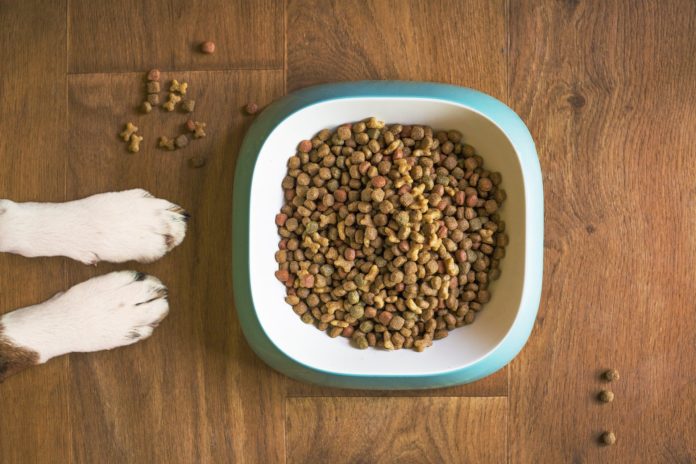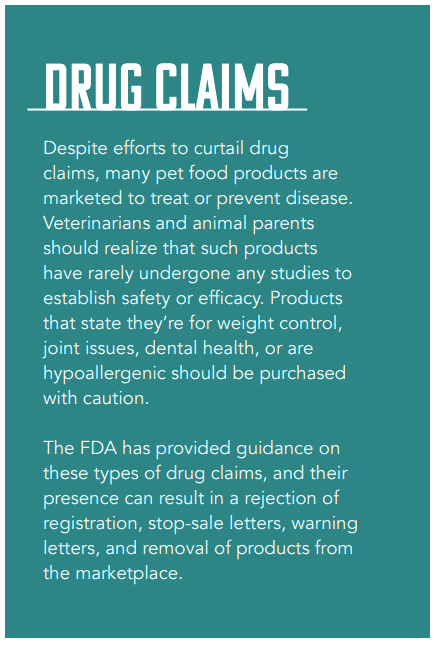Decoding pet food marketing jargon

A look at some common marketing terms used on pet food labels and what they mean!
Along with attractive graphics, pet food labels usually employ descriptive marketing terms to help sell the product. For the most part, these terms have no legal meaning. This article looks at popular marketing terms and their intended meanings.
Common marketing terms
You’ve likely seen the following terms on your dog or cat’s favorite food, but they have no legal definitions, nor are they regulated by the USDA or AAFCO:
- Human Grade: Products that are fit and safe for human consumption, termed “edible” by the USDA.
- Low Glycemic: Food that has a lower impact on blood sugar.
- Premium: Typically means food made with high quality ingredients.
- Cruelty-Free: A product that has not been tested on animals by the manufacturer.
- Free Range: Food made from animals that have access to outdoor spaces. This term is regulated by the USDA, but these regulations do not provide specifications on the size of the outdoor space.
- Healthy: Food that is wholesome, complete, and balanced.
- Holistic: Composed primarily of natural ingredients.
- Natural/All-Natural: Food made without artificial flavors, colors, and preservatives.
- Organic: Complies with the USDA’s National Organic Program guidelines
- Biologically Appropriate: Food that’s specifically formulated for a animal’s biology, usually composed of whole ingredients like meat, fish, eggs, and vegetables.
- Vet Approved: Implies a statistically sound survey of veterinarians has supported the food.
- Consciously/Responsibly Sourced: Implies ingredients have a limited or lowered effect on their local ecosystem.
Nutritional information with specific definitions
It’s important to look for nutritional information that does have specific definitions. For instance, AAFCO guarantees, calorie claims, and supplements all have guidelines provided by AAFCO or the FDA.
-

AAFCO guarantee: AAFCO sets minimum standards for animal nutrition. A product without AAFCO certification may be lacking as the single nutritional source for a dog or cat.
- Calorie information and calculation: To compare a canned food against a dry food, use this calculation: multiply the number for canned food by four to account for the higher water content of canned versus higher-density kibble-type products.
- Quantity and dry matter basis calculation: It’s up to consumers to do the calculations for determining value when comparison shopping. Foods of different types (e.g. dry kibble and canned food) should be compared on a dry-matter basis. Dry foods contain about 10% water, while canned foods are typically about 75% water. Here’s how to calculate: check the label for the food’s moisture percentage and subtract it from 100%. What remains is the percentage of dry matter. To find the dry matter percentage of another nutrient, like fat, divide the percentage of fat by the percentage of dry matter.



